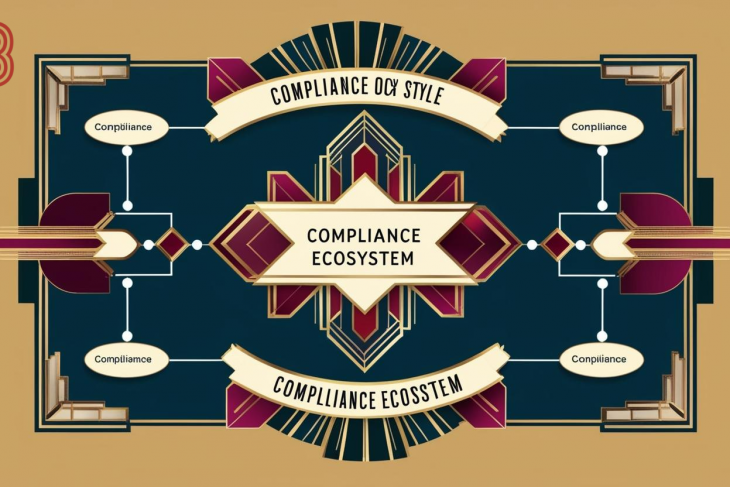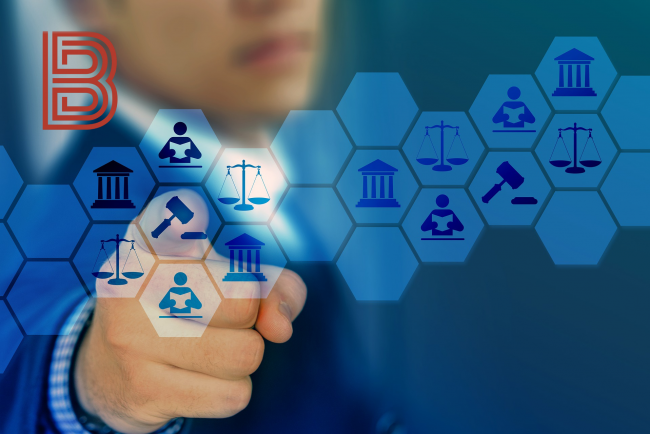
Introduction
In the digital era, as businesses and individuals increasingly rely on online platforms for financial transactions, communication, and data storage, the threat of digital fraud has escalated. Digital fraud encompasses a range of malicious activities including identity theft, phishing, account takeovers, synthetic identity fraud, and payment fraud, often executed using advanced technologies. To combat these evolving threats, organizations must implement robust Digital Fraud Risk Control Management (DFRCM) systems that not only detect and prevent fraud but also adapt to new risks dynamically.
1. Understanding Digital Fraud
1.1 Definition and Types
Digital fraud refers to deceptive activities carried out using digital platforms, typically to gain unauthorized access to data or financial resources. The most common types include:
Phishing and spear phishing – Fraudulent attempts to obtain sensitive data via deceptive emails or messages.
Identity theft – Using stolen personal information to commit fraud.
Synthetic identity fraud – Creating fictitious identities using real and fake data.
Account takeover (ATO) – Unauthorized access to user accounts.
Payment fraud – Unauthorized or fake transactions.
Business Email Compromise (BEC) – Fraudulent manipulation of business communications to initiate financial transfers.
1.2 Impact on Businesses
The financial and reputational damages from digital fraud are immense. According to a 2024 report by the Association of Certified Fraud Examiners (ACFE), organizations lose an average of 5% of their annual revenues to fraud. The consequences include:
Financial losses
Legal liabilities
Loss of customer trust
Regulatory fines
Operational disruptions
2. Digital Fraud Risk Control Framework
Digital fraud risk control involves a structured approach to identifying, assessing, mitigating, and monitoring fraud risks.
2.1 Risk Identification
Identifying fraud risks requires a deep understanding of digital systems and user behaviors. Key steps include:
Mapping digital assets – Identify all potential targets (e.g., databases, user accounts, payment gateways).
Vulnerability assessment – Evaluate where fraudsters could exploit weak points.
Behavioral analysis – Use data analytics to spot anomalies in user behavior.
2.2 Risk Assessment
Fraud risks must be assessed based on:
Probability of occurrence
Potential impact
Existing controls
Techniques like risk scoring, heat maps, and scenario analysis are commonly used.
2.3 Risk Mitigation
Risk mitigation involves implementing measures to prevent or reduce the likelihood of fraud:
Access controls – Limit access to sensitive systems based on roles.
Multi-factor authentication (MFA) – Add layers to user verification.
Encryption – Secure data in transit and at rest.
Monitoring and alert systems – Detect suspicious activity in real time.
3. Technological Tools in DFRCM
3.1 Artificial Intelligence and Machine Learning
AI/ML models are crucial in detecting and responding to fraud:
Pattern recognition – Identify known fraud patterns.
Anomaly detection – Spot deviations from normal user behavior.
Predictive analytics – Forecast potential fraud events before they occur.
3.2 Behavioral Biometrics
Tools that track user behavior such as keystroke dynamics, mouse movements, and device interactions help differentiate between legitimate users and impostors.
3.3 Blockchain Technology
Decentralized and immutable by design, blockchain can help prevent fraud in:
Supply chain management
Financial transactions
Identity verification
3.4 Digital Identity Verification Systems
Solutions like Know Your Customer (KYC), e-KYC, and digital ID wallets help verify the identity of users in real time using biometric data, government records, and facial recognition.
3.5 Cyber Threat Intelligence (CTI)
CTI systems gather data from the dark web, social media, and threat feeds to proactively identify fraud tactics and malicious actors.
4. Governance and Regulatory Compliance
4.1 Regulatory Landscape
Organizations must comply with a range of laws and regulations, depending on their jurisdiction:
General Data Protection Regulation (GDPR) – EU data protection and privacy.
Payment Services Directive 2 (PSD2) – Strengthens security in electronic payments in the EU.
Gramm-Leach-Bliley Act (GLBA) – U.S. regulation on protecting consumers’ financial information.
Sarbanes-Oxley Act (SOX) – U.S. regulation requiring internal controls over financial reporting.
Anti-Money Laundering (AML) and Counter-Terrorist Financing (CTF) – Global compliance frameworks.
4.2 Corporate Governance in DFRCM
Strong governance ensures accountability and effectiveness:
Establish fraud risk ownership at the executive level.
Define clear policies and escalation procedures.
Conduct regular audits and reviews.
Encourage a culture of transparency and ethics.
5. Incident Response and Recovery
Despite preventive measures, fraud incidents can still occur. A structured incident response is essential:
5.1 Preparation
Develop an incident response plan.
Train teams regularly.
Set up a fraud investigation unit.
5.2 Detection and Containment
Use automated alert systems.
Isolate affected systems quickly.
Notify stakeholders and regulators as needed.
5.3 Recovery and Remediation
Restore operations from backups.
Strengthen vulnerabilities exploited in the attack.
Offer redress or support to affected customers.
5.4 Post-Incident Review
Conduct root cause analysis.
Document findings and improve controls.
Update training and awareness programs.
6. Fraud Awareness and Training
Human error remains a leading cause of successful fraud attacks. Awareness programs should include:
Phishing simulation campaigns.
Fraud scenario workshops.
Role-based access training.
Cyber hygiene practices (e.g., secure passwords, recognizing scams).
A well-informed workforce acts as the first line of defense.
7. Case Studies
7.1 PayPal: AI-Driven Fraud Detection
PayPal uses AI models to monitor billions of transactions daily. By using real-time behavioral analysis and deep learning algorithms, it successfully flags irregular activities within milliseconds, reducing fraud losses by over 50%.
7.2 Uber: Account Takeover Prevention
Uber faced increasing ATO incidents in 2019–2021. They integrated device fingerprinting, location-based authentication, and risk scoring to flag suspicious logins. This resulted in a 30% drop in successful ATOs within six months.
7.3 Wirecard: Failure of Internal Controls
Wirecard, once a fintech darling, collapsed in 2020 due to a massive accounting fraud scandal. The lack of proper oversight, ineffective auditing, and internal collusion underscored the critical role of governance and control frameworks.
8. Challenges in Digital Fraud Risk Control
Despite technological advances, DFRCM faces several challenges:
8.1 Evolving Fraud Tactics
Fraudsters constantly innovate, using AI-generated deepfakes, social engineering, and sophisticated malware, outpacing traditional defenses.
8.2 Data Privacy vs. Security
Balancing security measures (e.g., surveillance, tracking) with users’ rights to privacy remains a major dilemma.
8.3 Integration Complexity
Integrating fraud detection tools with legacy systems can be difficult and costly, especially for large organizations.
8.4 False Positives
Overzealous fraud detection may flag legitimate transactions, harming user experience and causing financial delays.
9. Future Trends in Digital Fraud Risk Control
9.1 AI Explainability
As organizations rely more on AI, regulators and customers demand transparency. Explainable AI (XAI) allows humans to understand how fraud decisions are made.
9.2 Decentralized Identity (DID)
Future systems may allow individuals to control their digital identities using blockchain-based solutions, reducing centralized vulnerabilities.
9.3 Continuous Authentication
Traditional login-based security is being replaced by continuous authentication methods that evaluate user behavior throughout a session.
9.4 Quantum-Resistant Encryption
As quantum computing becomes a reality, existing encryption methods may be rendered obsolete. Organizations are exploring quantum-safe algorithms to future-proof security.
10. Best Practices for Organizations
Establish a fraud risk governance framework.
Continuously update risk assessments.
Invest in advanced fraud detection technologies.
Conduct regular fraud awareness training.
Maintain regulatory compliance.
Have a clear and tested incident response plan.
Collaborate with industry peers and intelligence communities.
Summary
Digital fraud is an ever-evolving threat that can devastate organizations financially and reputationally. However, with a robust Digital Fraud Risk Control Management system that combines technology, governance, training, and strategic foresight, organizations can not only reduce their exposure but also build resilient systems that safeguard trust.
As digital ecosystems grow in complexity and interconnectivity, the ability to proactively manage fraud risks will become a key differentiator for businesses aiming for sustainable growth and customer confidence in the digital age.




















